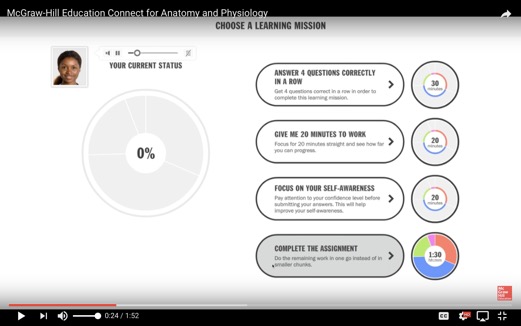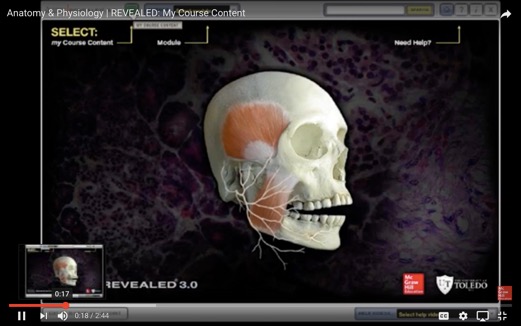How to help your students succeed in A&P Level coursework.
Published January 24, 2018
Students that have the necessary foundational knowledge of the basic science concepts seem to do well in a college level Anatomy and Physiology course. Anatomy and Physiology courses provide a critical foundation of knowledge that is necessary for students heading into the healthcare profession. As I started to teach Anatomy and Physiology courses, I realized that identifying the key gaps in knowledge during the beginning of the course can be very vital to student success. Knowledge gaps generally result in lack of self-esteem, which later leads to lack of motivation. This identification allows the student to minimize frustrations as the course content progresses.
There are many reasons why students are not prepared for Anatomy and Physiology courses. Demographic and cognitive factors, coupled with study strategies and time management skills, are some of the reasons for the lack of preparation. From the content point of view understanding basic scientific vocabulary, learning to learn, and metacognition are additional factors that can play a part in the student’s journey in an A&P course. Instructors in A&P often observe high failure and withdrawal rates. Understanding the dynamics of this problem is important in the overall scheme of education in healthcare professions.
There are four areas of study skills that a student taking any A&P course needs to have mastered during the first three weeks of the course.
First, taking the time to understand the basic vocabulary that is part of the science curriculum. This can be done using individual terms and their description, which is rich in context so that students can remember them in the future. For example: Hypo and Hyper, or pH and Hydrogen ions. Asking students to generate their own understanding of these terms will also open up other topics for discussion. Using multimedia and diagrams to introduce and practice the science vocabulary will assist the student to gain confidence.
Second, improving students reading of the chapters. This can be done by having them pause while reading and chunk the information into bite sized summaries. By creating their own summary statements, students are able to process the information in a logical manner. Asking the students to connect what they know to these terms can clarify their misconceptions
Third, teaching them to draw diagrams and concept maps to clarify the connection between the various topics in the chapter. For example – How is structure of the epithelial tissue connected to its function? This will require students to organize their knowledge into tables, or graphic organizers, or labeling of diagrams, or learning to write a figure legend based on the diagram.
The last, but important study skill, is to review the important information by using adaptive technology and online tools. Online adaptive tools are helpful in providing students with resources to work outside the classroom on activities, concepts, assessment, and study strategies that involve metacognition and understanding of the material.
LearnSmart Prep is one such adaptive learning tool that can identify what a student doesn’t know, and then provides “teachable moments” designed to mimic the office hour experience. When combined with a personalized learning plan, an unprepared or struggling student has all the tools they need to quickly and effectively learn the foundational knowledge and skills necessary to be successful in in a college level A&P course.

Understanding scientific concepts happens in various steps that are related to the process of metacognition. Using Edgar Dale’s degrees of knowing word meanings (1965), we can
recognize the various stages of understanding science vocabulary.
Stage 1: I have never heard this word before. I struggle with Pre Lecture quizzes.
Stage 2: I know there is such a word, but I don’t know what it means. I struggle with diagrams and in-class models.
Stage 3: I have heard it and seen it, but I do not know what it has to do with and I cannot tell you what it means. I struggle with in-class concept maps.
Stage 4: I know what it means, I will recognize it when I see it or hear it. I can use it in a context of a case study.

Understanding the location and function of these muscles with origin and insertions while designing a case study on chewing is an important study tool for students.
Here is a summary of the instructional study tips for a student taking A&P class.
1) Preview the basic vocabulary
2) Connect the Terms with scientific understanding of the material
3) Clarify the connections
4) Take a diagnostic test to identify the gaps in scientific knowledge
5) Use online adaptive learning tools to integrate the material
6) Work on online formative and summative assessments outside the classroom to strengthen the understanding
7) These study skills can be part of a summer science bridge program using LearnSmart Prep as one of the tools
8) One of the practices in an A&P course is to pose and refine questions that can lead the student to explain how the body works based on the physiology. Learning to draw and construct visual diagrammatic models can be used to understand an organ system. Use the critical thinking case studies in the textbook or online homework system such as Connect to demonstrate your own understanding of the process.